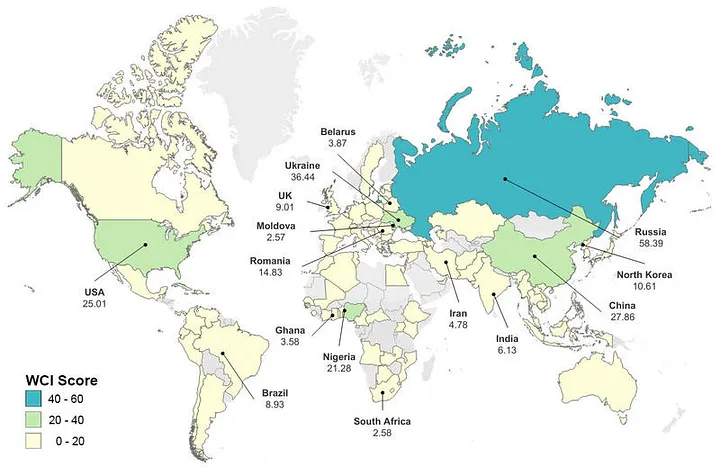Imagine this scenario: You’re a high-ranking manager at an insurance firm, starting your day with a coffee in hand. As you settle in and attempt to log into your account, you quickly realize something is wrong. After several failed attempts, frustration sets in. A glance at your inbox shows a flood of urgent messages from your IT team, and a chill runs down your spine: your company has been hit by a ransomware attack. A notorious cybercriminal syndicate has infiltrated your system through a phishing email, encrypted all company data, and is demanding millions of dollars to restore access. Employees are locked out, unable to work, and your business grinds to a halt.
For nearly a month, you and your IT team, alongside external cybersecurity experts, wrestle with this digital catastrophe. In the end, you see no other choice but to pay the ransom and hope for the best. Your company is now out millions of dollars and faces the daunting task of rebuilding and moving forward.
This isn’t a fictional story. This happened to the insurance company my wife works for, and it could easily happen to any company. In fact, today, the most costly claim that insurance companies have to pay out is for cybersecurity incidents.
The Real-World Impact of Cybersecurity Threats
Cybersecurity threats are no longer an emerging issue; they are a clear and present danger to businesses of all sizes. According to a 2023 report by IBM, the average cost of a data breach in the United States has surged to $9.48 million, a staggering increase from $3.54 million in 2006. In Canada, while slightly lower, each breach still costs businesses an average of $6.32 million, as reported by Insurance-Canada.ca.

Cost of Data Breaches in the US from 2006–2023 (Source Statistia)
These numbers are not just statistics; they represent significant financial losses, operational disruptions, and damage to customer trust that can cripple a business.
Comparing the Costs of Insurance Claims
To put the cost of cybersecurity attacks into perspective, consider how they compare to other types of insurance claims:
- Data Breaches and Cybersecurity Attacks: Average cost of $9.48 million per incident in the U.S.
- Product Liability Claims: Involve purchased products not performing as intended and causing damage to the buyer. On average, U.S. judges award $7 million to victims.
- Professional Liability Claims: Typically associated with malpractice suits involving lawyers, doctors, and other professionals. These claims cost around $500,000 on average.
- Property Damage and Business Interruption: Covers damages from vandalism, natural disasters, or other incidents. Average cost: $65,000.
- Vehicle Damage: Involves damage to the vehicle or its occupants. Average claim cost: $29,000.

Ransomware Payments in Canada from 2020–2022 (Source: Government of Canada)
As we can see, cybersecurity attacks overshadow all other potential disasters a business might face. Yet, when asked, “What is the most costly event that can happen to a business?” most people wouldn’t think of data breaches. The general public underestimates the value of data and the devastating impact its loss can have.
Why Cybersecurity is Overlooked as a Major Threat
So why do so few people recognize the enormous threat posed by data breaches? A fundamental misunderstanding persists about how valuable our data truly is. Despite ongoing campaigns emphasizing data protection, many still don’t grasp its significance.
Consider this: when a business goes bankrupt, what’s the asset people fight hardest to acquire? It’s not the inventory or the building; it’s the customer database. With access to that data, competitors can target the bankrupt business’s customers and lure them away.
The Increasing Importance of Data Protection
The cost of neglecting data security is rising. Most businesses can no longer afford to be caught unprepared, especially as governments worldwide draft new laws and regulations to protect personal data. We have reached a point where a company doesn’t even need to fall victim to a cyberattack to face severe consequences. If regulators discover that a business isn’t adequately protecting its customers’ data, it could be forced to shut down until it complies.
It’s not just cybercriminals who pose a threat anymore. Have you noticed how cyber attacks and breaches have become more prevalent since the Russian invasion of Ukraine? It’s highly plausible that the Russian state has leveraged cybercriminals to target businesses in Western countries for its own benefit — a tactic North Korea has employed for years. Just a few months ago, a story broke about a cybersecurity firm that accidentally hired a North Korean hacker for a remote position, who then proceeded to upload malware to their servers. It’s hard to imagine a more embarrassing scenario for a cybersecurity firm.

A Map of the World Based on the World Cybercrime Index, Russia is firmly #1 (Source Dr. Jonathan Lusthaus)
Beyond the legal ramifications, the importance of cybersecurity is growing as attacks increase yearly, defense costs rise, and the consequences of failure escalate exponentially. Businesses must regularly audit their defenses, stay current on the latest regulations, and understand the evolving landscape of cyber threats.
Conclusion: Don’t Wait Until It’s Too Late
Cybersecurity is not just an IT issue; it’s a critical business concern that impacts every aspect of operations. With the costs of data breaches skyrocketing and new regulations being enforced worldwide, businesses can no longer afford to be complacent. Regularly audit your cybersecurity defenses, stay informed about the latest threats and regulations, and take proactive steps to protect your data. By doing so, you’ll not only safeguard your assets but also ensure the long-term survival and success of your business.
